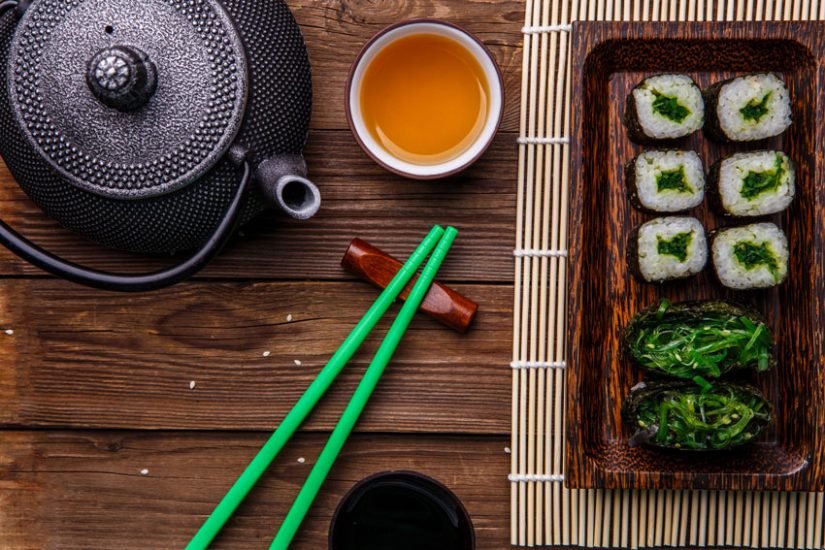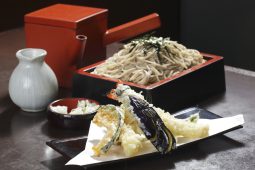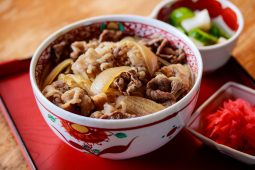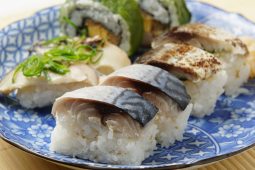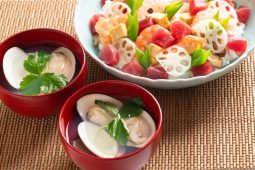Here are our hot tips for cheap but healthy eating in Japan.
Eating Out
Eating out can be expensive, but there are plenty of cheap diners and eateries in Japan where you can eat well at reasonable prices. Here are our recommended restaurants for cheap, healthy food:
- Teishoku-ya are simple, no-frills diners serving typical Japanese set meals at super low prices. Here you can eat your fill of healthy fish, rice, miso soup, and pickles. Popular chains are Yayoiken and Ootoya.
- Family Restaurants also have healthy Japanese style set meals on their menus and are open from morning till night. Inexpensive options include Denny’s and Sato.
- Kaiten sushi restaurants serve “conveyor-belt sushi” at cheap prices — and they are everywhere. A dish with two pieces of sushi can cost as little as 100 yen and is obviously a great source of protein.
Inexpensive ready-made boxed-meal bento shops are a great takeaway option if you don’t feel like cooking. Popular stores are Hokka-Hokka-Tei and Hotto-Motto.
Eating In
One obvious way to save money is by not eating out too much. If you buy your groceries from a local supermarket rather than the posh food hall of a department store then you will definitely save a little bit of money. There are also some cheap food items that will help keep your weekly budget low.
- Tofu is a great source of protein with hardly any calories. A versatile ingredient in many healthy recipes, you can add it to miso soup, stir-fries, nabe hot pots, tofu burgers, or eat it on its own with a dash of ponzu sauce. You can usually get a 320 g block of tofu for under 50 yen.
- Natto is not to everyone’s taste, but these sticky fermented beans are certainly healthy as they are packed with protein, fiber, minerals, and vitamins. Usually, a pack of three servings will cost you around 80 yen. You can eat it with rice and some chopped scallions, or just have it on its own. Read our article The Story of Natto for more details of this unique Japanese food.
- Konnyaku is a chewy jelly made from processed konjac yam that is often added to soups, stews, and oden hot pots. This jelly has plenty of fiber, but no sugar, fat or carbohydrates. And it only costs around 90 yen for 200 grams.
- Harusame or “glass noodles” are made from processed bean starch or potato starch and can be a useful source of iron. Often added to stir-fries, soups, and spring rolls, they can also serve as a healthy alternative to pasta for people who are gluten intolerant. 70 grams will cost around 90 yen, but once you add the noodles to water they greatly expand in size so this is definitely a cheap buy.
- Edible seaweed is plentiful around the islands of Japan and so it is very cheap too. Hijiki, nori, and wakame are all popular forms of edible seaweed that provide a great source of fiber, vitamins and minerals and can be eaten as an alternative to more expensive vegetables.
Fresh fruit and vegetables are famously expensive in Japan, but there are some veggies that won’t cost you much and can be a great source of nutrition. Moyashi are young crunchy bean sprouts that cost under 40 yen for 200 grams, and they can be added to salads, stir-fries, soups, or simply served with a dressing. They are also a good source of vitamins, protein, calcium, potassium, iron and fiber. Tōmyō are pea sprouts which are just as healthy as moyashi and one bag of growing sprouts will cost around 100 yen. You can use them in a nice crunchy salad or as a sandwich garnish, or add them to stir-fries, hot pots and soups. The great thing about tōmyō though is that after you cut them, if you keep the roots in water, they will grow back again. If you are really lucky they will grow back twice! Other cost-effective veggies that can also be regrown after chopping are onions and komatsuna (Japanese mustard spinach).
If you have a balcony that gets a bit of sun, you might also try growing your own veggies. Tomatoes, cucumbers and eggplants are easy to grow from seed and not only will they be cheaper than shop-bought veggies, but they will probably be tastier too!


